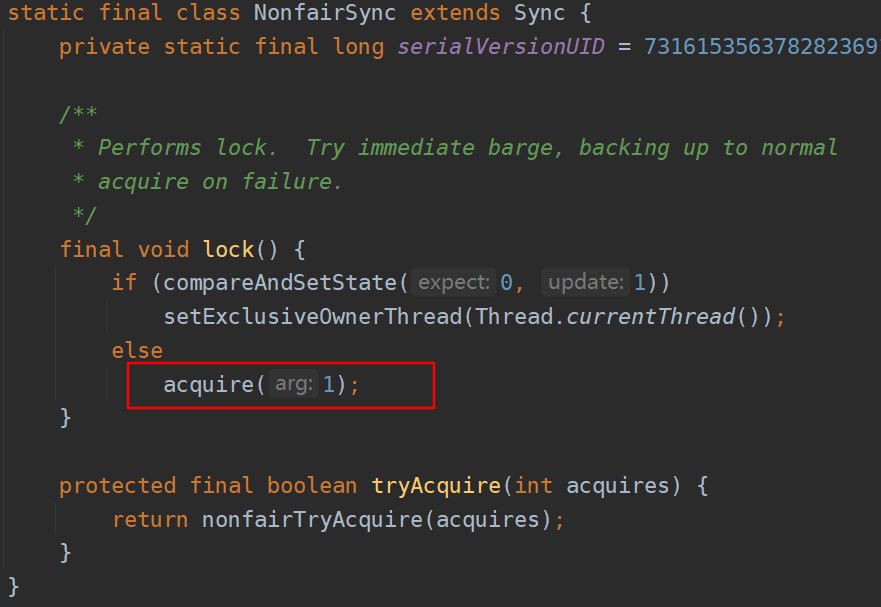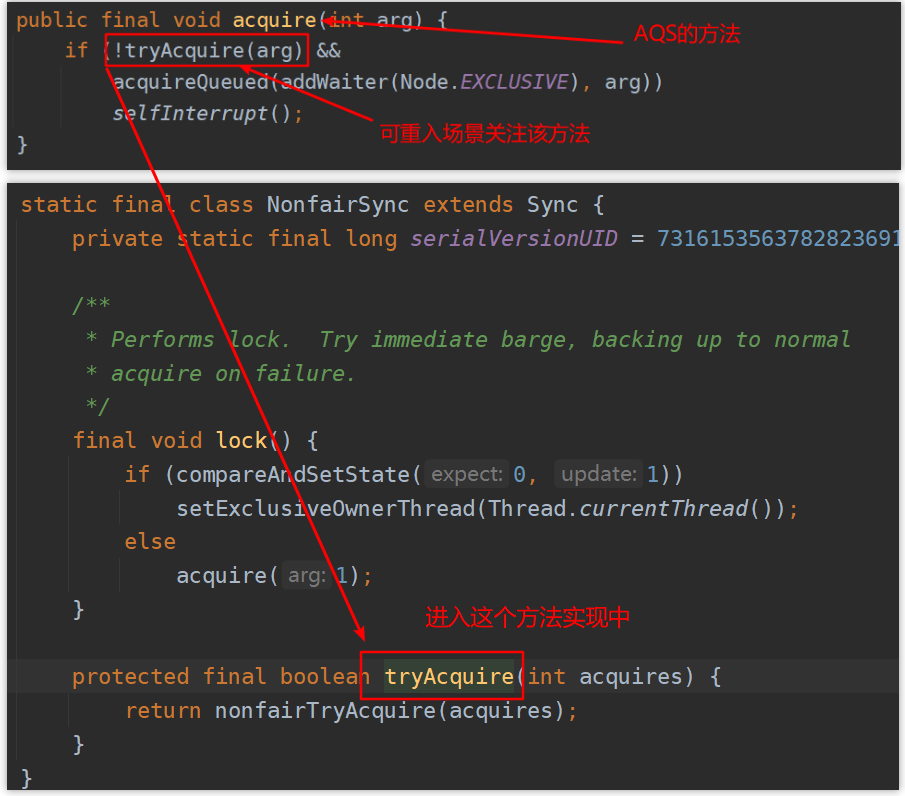compareAndSetState(0, 1):由于现在的情况是可重入的加锁,那么这个cas一定是fasle,接下来就要走这个acquire方法。
这个acquire就是AQS的方法,随后进入这个tryAcquire方法中,这个tryAcquire是AQS的一个空实现,具体是由子类来实现的,因此就是NonfairSync类中的tryAcquire
nonfairTryAcquire流程:
- 先获取到当前的线程 -> 线程1
- 获取state变量值的过程,JDK源码里大量的运用了volatile,可见性的问题,保证一些关键变量,修改 -> 读取的可见性
- 为什么会有这段代码呢?其实进入到这里,代表他之前一定是看到state != 0,才会进入到这里,为了保证代码的健壮性,当前线程之前加锁失败了继续走别的流程了,走着走着万一别的线程释放锁了,当前线程就没有必要再放入队列中了,直接加锁就完事了。
- 代表当前没有人释放锁,再次判断,如果执行这个方法的线程 = exclusiveOwnerThread(加锁的线程),就代表现在要做一个重入锁的操作了,之前他自己加过锁,然后在这里他就再次加锁
- 此时,c = 1,nextc = c(1) + acquires(1) = 2,其实就是代表了一个线程可重入加锁了1次,2代表了加锁的次数。
- 修改这个state的值,volatile保证了可见性
/*** Performs non-fair tryLock. tryAcquire is implemented in* subclasses, but both need nonfair try for trylock method.*/final boolean nonfairTryAcquire(int acquires) {//1.final Thread current = Thread.currentThread();//2.int c = getState();//3.if (c == 0) {if (compareAndSetState(0, acquires)) {setExclusiveOwnerThread(current);return true;}}//4.else if (current == getExclusiveOwnerThread()) {//5.int nextc = c + acquires;if (nextc < 0) // overflowthrow new Error("Maximum lock count exceeded");//6.setState(nextc);return true;}return false;}

